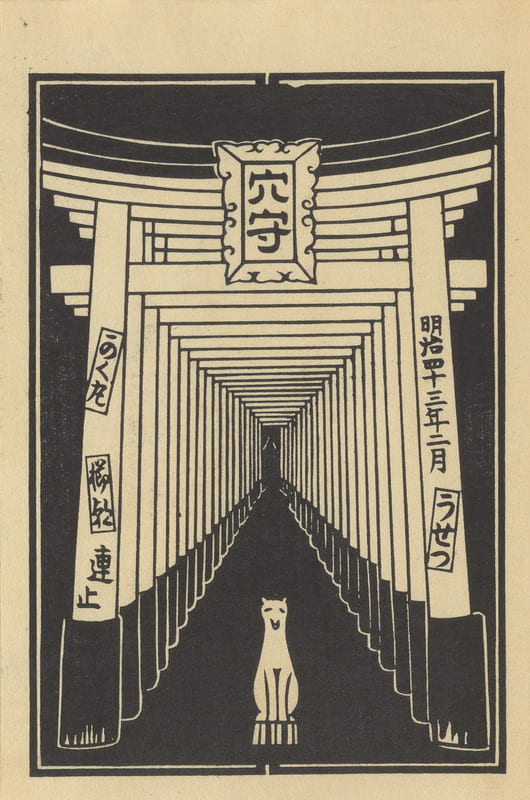Pasting Senjafuda
Senjafuda have their roots in religious observance. The ja 社 in senjafuda 千社札 refers to Shintō shrines, and there’s historical evidence that senjafuda culture grew out of devotion to the god Inari, a harvest god worshipped at thousands of shrines throughout Japan. But Buddhism is just as important to senjafuda culture as Shintō: slips were and are also pasted at Buddhist temples, and many senjafuda include Buddhist motifs.


The first slip above relates to Inari worship, and therefore has Shintō connections. The most recognizable is the distinctive double-linteled torii gate seen before every Shrintō shrine (here we’re looking through several in a row). The slip on the right is a representation of the Buddhist conception of Hell, with King Enma judging newly-dead sinners. The swastika-like design on Enma’s desk is an ancient Buddhist symbol still widely used today (and should not be confused with the Nazi swastika)!